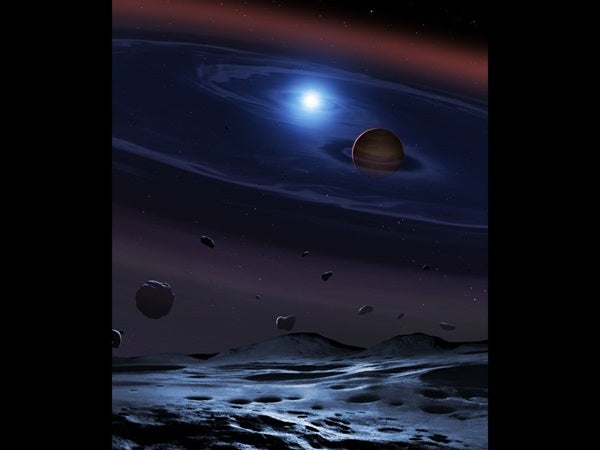A pair of binary “stars,” marked SDSS 1557, have evidence of a rocky planet. They’re calling it a Tatooine system. The truth is weirder than that.
Both of the two stars in the system are not quite stars. One is a white dwarf, the remnants of a Sun-like star after it exhausts its hydrogen reserves and becomes an Earth-sized husk of white, hot, dense fury. The other is a brown dwarf, a large object that forms like a star, but ultimately fails to ignite and begin fusing hydrogen into helium. They often fall short of the mass of a small star, but are far more massive than gas giants (usually a minimum of 10 times the mass of Jupiter).
The white dwarf seems to be eating rocky asteroids trailing off from a belt and eventually falling into the dense white dwarf. The asteroids appear to be made of mostly metals rather than ice and lighter minerals, which points to the formation of rocky planets at some point in the system’s past.
They still may be hiding there today, but there could be a giant impediment to finding them: the brown dwarf. The object was hiding in the results, as brown dwarfs give off little light, but it’s mass gives the white dwarf a noticeable tug.
“The brown dwarf was effectively hidden by the dust until we looked with the right instrument,” Steven Parsons of University of Valparaíso and University of Sheffield and a coauthor on the paper said in a press release, “but when we observed SDSS 1557 in detail we recognised the brown dwarf’s subtle gravitational pull on the white dwarf.”
The study was published in Nature Astronomy.










